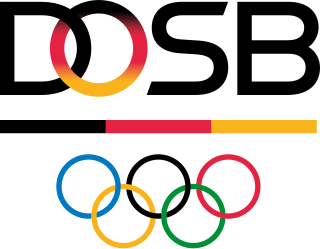In the fourteen years the Weimar Republic was in existence, some forty parties were represented in the Reichstag. This fragmentation of political power was in part due to the use of a peculiar proportional representation electoral system that encouraged regional or small special interest parties and in part due to the many challenges facing the nascent German democracy in this period.
The Social Democratic Workers' Party of Germanya was a Marxist socialist political party in the North German Confederation during unification.
Trade unions in Germany have a history reaching back to the German revolution in 1848, and still play an important role in the German economy and society.

The Free Association of German Trade Unions was a trade union federation in Imperial and early Weimar Germany. It was founded in 1897 in Halle under the name Representatives' Centralization of Germany as the national umbrella organization of the localist current of the German labor movement. The localists rejected the centralization in the labor movement following the sunset of the Anti-Socialist Laws in 1890 and preferred grassroots democratic structures. The lack of a strike code soon led to conflict within the organization. Various ways of providing financial support for strikes were tested before a system of voluntary solidarity was agreed upon in 1903, the same year that the name Free Association of German Trade Unions was adopted.

The German Olympic Sports Confederation was founded on 20 May 2006 by a merger of the Deutscher Sportbund (DSB), and the Nationales Olympisches Komitee für Deutschland (NOK) which dates back to 1895, the year it was founded and recognized as NOC by the IOC.
The General Commission of German Trade Unions was an umbrella body for German trade unions during the German Empire, from the end of the Anti-Socialist Laws in 1890 up to 1919. In 1919, a successor organisation was named the Allgemeiner Deutscher Gewerkschaftsbund, and then in 1949, the current Deutscher Gewerkschaftsbund was formed.

The German Metal Workers' Union was a German industrial union for metalworkers formed in 1891 and dissolved after the Nazis' accession to power in 1933.

Julius Motteler was a pioneering German Socialist and businessman.
Reichsvereinigung der Deutschen Gewerkschaften was a trade union centre in the First Czechoslovak Republic. The organization had its headquarters on Krakovská street 11 in Prague. Initially the Reichsvereinigung grouped all the main German nationalist, or völkisch, trade unions in the Sudetenland. As of 1921, the affiliates of the Reichsvereinigung claimed to have 49,500 members. By the end of 1928, the organization claimed to have 51,500 members. The Reichsvereinigung was a supposedly apolitical body for German workers.
Deutschsozialistische Bergarbeiterverband was a Nazi trade union for German miners in Czechoslovakia. It was founded in 1922. The union was based in Most. As of 1929, it claimed to have 3,371 members. The union was linked to the German National Socialist Workers Party (DNSAP). Heinrich Proste was the leader of the union. Deutschsozialistische Bergarbeiterverband was affiliated with the Reichsvereinigung der Deutschen Gewerkschaften. The union published the monthly Der deutscher Bergmann from Most between 1924 and 1933.
Verband deutscher Gewerkschaften was a German Nazi trade union centre in Czechoslovakia. The organization was formed in 1929, by eight unions that broke away from the Reichsvereinigung der deutscher Gewerkschaften. At the time of the founding of Verband deutscher Gewerkschaften, its affiliates claimed a combined membership of 46,700. The organization had its headquarters in Ústí nad Labem.
The German Tobacco Workers' Union was a trade union representing people in the tobacco manufacturing industry in Germany.

The German Clothing Workers' Union was a trade union representing people involved in making clothing in Germany.

The German Wood Workers' Union was a trade union representing carpenters, joiners, and related workers, in Germany.

The German Agricultural Workers' Union was a trade union representing agricultural and forestry workers in Germany.

The German Union of Saddlers, Upholsterers and Portfolio Makers was a trade union representing leather goods and upholstery workers in Germany.

The Union of German Book Printers was a trade union representing printers in Germany.
The German Leather Workers' Union was a trade union representing workers involved in tanning and glovemaking.
The Union of Saddlers and Portfolio Makers was a trade union representing workers involved in making saddles, bags and wallets.
The Central Union of Construction Workers was a trade union representing building labourers in Germany.









